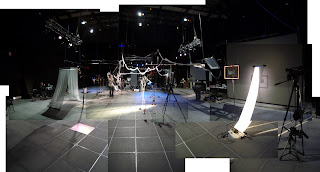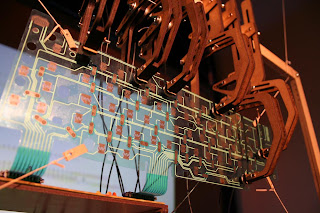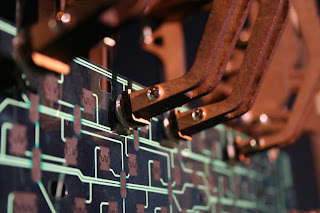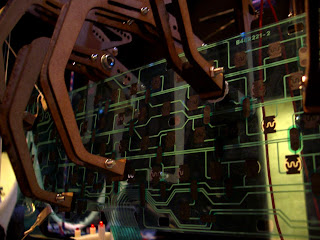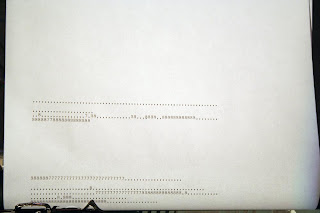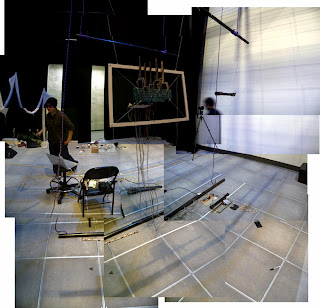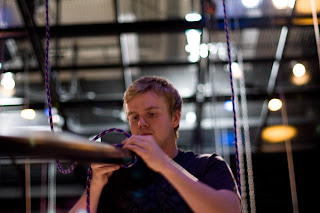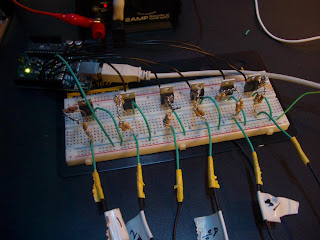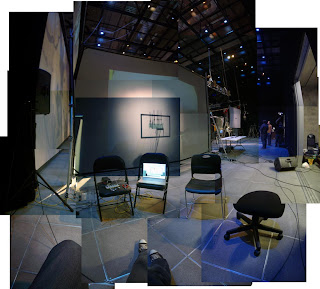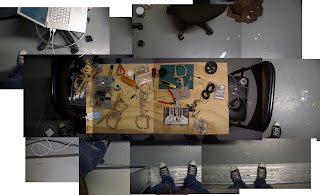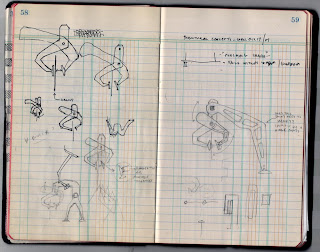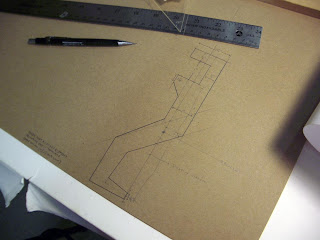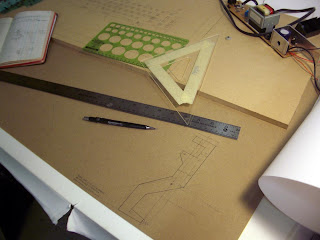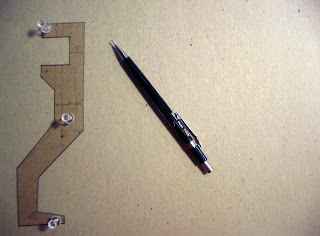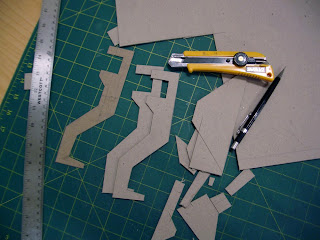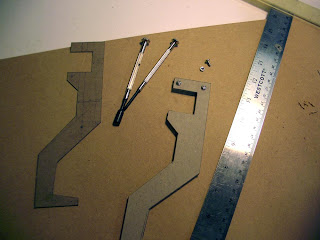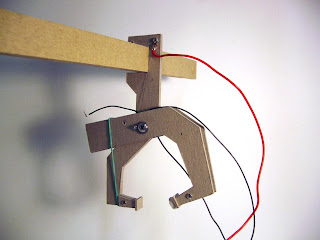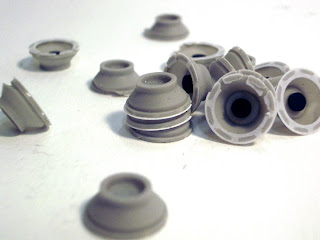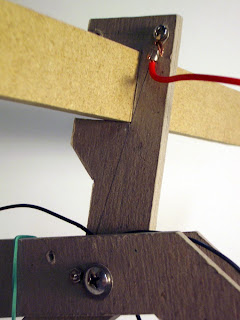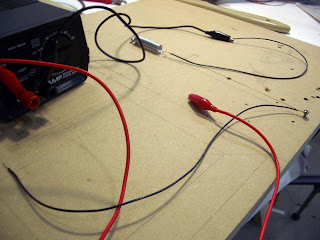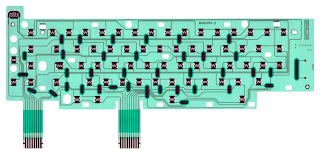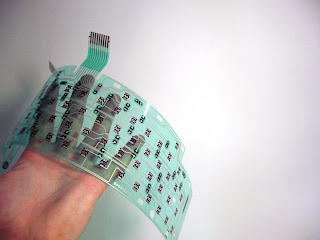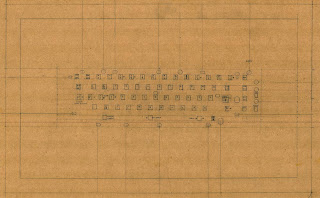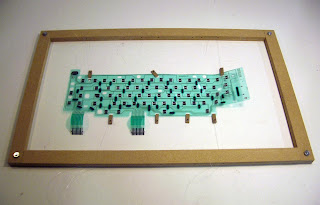Sunday, December 16, 2007
Monday, December 3, 2007
Amanuensis: Dictation & Exploitation
It has taken me a while to derive a direction that I am confident in, but I think I have finally arrived at that point. It has come through much frustrations and discussions with numerous people (thanks Patrick, Candace and Gregory). I have been thinking for the past couple of weeks that my Amanuensis device should observe and record something very technical and complex - with the thought that it would somehow make my project more meaningful... I got caught up in the technology. I now realize that that was the main source of my frustration and confusion over the past few weeks. It was a small group discussion with Gregory and Candace where it hit me that I need to focus on a simple, already establish system and pattern within the building.
This is when I began to take a look at some of the work I had done earlier in the term and it all started to come together. The drawings I had started to produce with my typewriter at the beginning of the term really embodied a lot of the ideas and potential that my project has started to take on. The repeating bracket drawing, for instance, was really about the exploitation of the typewriter as a machine capable of reproducing consistent characters over and over... and over again. The typewriter's ability to do so enables simple systems to take on new meaning. A bracket when used in a sentence might just be a bracket, but when repeated, flipped, and layered on top of itself it begins to express a new language. It takes on a new potential in the form of a self-producing pattern. This simple character becomes something more meaningful.
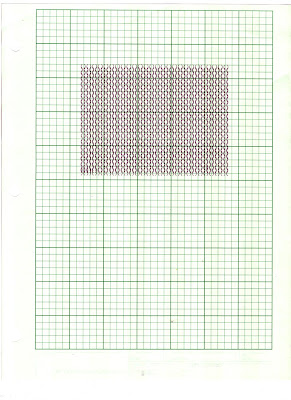 Similarly, if we take an existing system within a building - for example a door - might we be able to find an embodied potential within its established constraints? I remember walking to a used book store in Halifax and talking with Darcy and Candace about the idea of "interactivity" in architecture. I can't recall his name, but an architect we had just finished seeing lecture had so eloquently described his idea of interactivity as a series of LED's within the ceiling of a building which would fade in and out slowly as people entered the space. To me this is no different from a bell on the door of a small corner store. As we were entering the building Darcy said that his idea of interactivity was the opening and closing of the door - to which I agreed. This is part of my reasoning for choosing a door for my system to be observed and to, essentially, become the dictator to my amanuensis. The idea is that the door takes on the role of the bracket from my previous drawing. A system that might be taken for granted but has a potential which resides within it. By monitoring the different components of this system - for example the hinge, the handle, the latch, and the stop - does a pattern begin to reveal itself? I believe that it will. This will be the basis and goal for my experiment over then next 2 weeks.
Similarly, if we take an existing system within a building - for example a door - might we be able to find an embodied potential within its established constraints? I remember walking to a used book store in Halifax and talking with Darcy and Candace about the idea of "interactivity" in architecture. I can't recall his name, but an architect we had just finished seeing lecture had so eloquently described his idea of interactivity as a series of LED's within the ceiling of a building which would fade in and out slowly as people entered the space. To me this is no different from a bell on the door of a small corner store. As we were entering the building Darcy said that his idea of interactivity was the opening and closing of the door - to which I agreed. This is part of my reasoning for choosing a door for my system to be observed and to, essentially, become the dictator to my amanuensis. The idea is that the door takes on the role of the bracket from my previous drawing. A system that might be taken for granted but has a potential which resides within it. By monitoring the different components of this system - for example the hinge, the handle, the latch, and the stop - does a pattern begin to reveal itself? I believe that it will. This will be the basis and goal for my experiment over then next 2 weeks.
This is when I began to take a look at some of the work I had done earlier in the term and it all started to come together. The drawings I had started to produce with my typewriter at the beginning of the term really embodied a lot of the ideas and potential that my project has started to take on. The repeating bracket drawing, for instance, was really about the exploitation of the typewriter as a machine capable of reproducing consistent characters over and over... and over again. The typewriter's ability to do so enables simple systems to take on new meaning. A bracket when used in a sentence might just be a bracket, but when repeated, flipped, and layered on top of itself it begins to express a new language. It takes on a new potential in the form of a self-producing pattern. This simple character becomes something more meaningful.
 Similarly, if we take an existing system within a building - for example a door - might we be able to find an embodied potential within its established constraints? I remember walking to a used book store in Halifax and talking with Darcy and Candace about the idea of "interactivity" in architecture. I can't recall his name, but an architect we had just finished seeing lecture had so eloquently described his idea of interactivity as a series of LED's within the ceiling of a building which would fade in and out slowly as people entered the space. To me this is no different from a bell on the door of a small corner store. As we were entering the building Darcy said that his idea of interactivity was the opening and closing of the door - to which I agreed. This is part of my reasoning for choosing a door for my system to be observed and to, essentially, become the dictator to my amanuensis. The idea is that the door takes on the role of the bracket from my previous drawing. A system that might be taken for granted but has a potential which resides within it. By monitoring the different components of this system - for example the hinge, the handle, the latch, and the stop - does a pattern begin to reveal itself? I believe that it will. This will be the basis and goal for my experiment over then next 2 weeks.
Similarly, if we take an existing system within a building - for example a door - might we be able to find an embodied potential within its established constraints? I remember walking to a used book store in Halifax and talking with Darcy and Candace about the idea of "interactivity" in architecture. I can't recall his name, but an architect we had just finished seeing lecture had so eloquently described his idea of interactivity as a series of LED's within the ceiling of a building which would fade in and out slowly as people entered the space. To me this is no different from a bell on the door of a small corner store. As we were entering the building Darcy said that his idea of interactivity was the opening and closing of the door - to which I agreed. This is part of my reasoning for choosing a door for my system to be observed and to, essentially, become the dictator to my amanuensis. The idea is that the door takes on the role of the bracket from my previous drawing. A system that might be taken for granted but has a potential which resides within it. By monitoring the different components of this system - for example the hinge, the handle, the latch, and the stop - does a pattern begin to reveal itself? I believe that it will. This will be the basis and goal for my experiment over then next 2 weeks.
PIEZO + ARDUINO
This video shows how to connect a piezo strip to an arduino for use in detecting and quantifying vibrations.
Piezo strip and arduino demo
Piezo strip and arduino demo
Thursday, November 29, 2007
Monday, November 26, 2007
Amaneunsis: Behavioural Drawing (in progress)
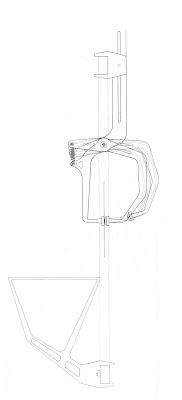 I am in the process of re-drawing the top connection point for the shape memory alloy - which will allow for a much long piece than the previous version of the pincer allowed for. This will ensure a longer and more accurate throw of the pinching arm.
I am in the process of re-drawing the top connection point for the shape memory alloy - which will allow for a much long piece than the previous version of the pincer allowed for. This will ensure a longer and more accurate throw of the pinching arm.The drawing is also attempting to capture the behavioural patterns of the amaneunis.
Sunday, November 25, 2007
"I, For One, Welcome Our New Robotic Calligraphers"
 From ministryoftype.co.uk:
From ministryoftype.co.uk:This robot has been programmed to write out the entire Martin Luther bible in a calligraphic style on a long roll of paper. I wonder if they’re going to bind the pages up and publish it? What the robot does is a step up from print in reproducing the manuscripts made by monks, which is great, though it doesn’t say (though my German isn’t good enough to read the product page) whether the robot arm applies differential pressure and angle of stroke depending on the previous letters, or how far across the line it is, or how far down the page, like a human being would. If it did, then that would in my mind give the work a magical, delicate quality of something written. I don’t want to get all tedious and mystical about some missing innate human or animistic quality, but I like the idea of a robot arm having to stretch a bit at the edges of the page, altering its stroke weight after a particularly arduous cadel previously, all that kind of stuff. I can imagine a whole series of publications that could be given this ‘hand done’ treatment. We could have special editions of books made by one-time-only robot arms, ones that get tired after a number of copies and can’t be made to write any more, books made by robots with a signature style, with minds of their own. All eventually of course leading to original works created by machines so advanced we have to refer to them as human (or post-human) too…


Friday, November 23, 2007
PAJA - Technology for Music, Art and Design
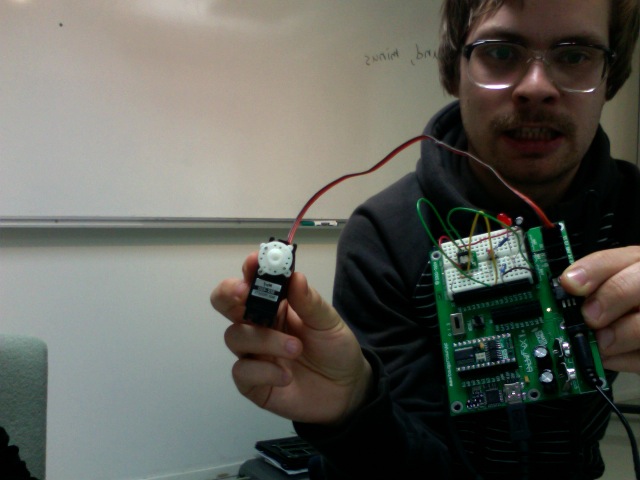 Here is a nice blog worth checking out - Paja. It has a lot of good and useful stuff, including downloadable schematic diagrams, and data sheets for a lot of different sensors. It seems they use primarily PBasic Stamp though... which is fine. A lot of the stuff is still very relevant and they do offer the PBasic Stamp code in the case that anyone gets into that. There are also some really nice links along the right hand side. Most notably this link to a resistance calculator widget for Mac users - very handy for quickly identifying resistors.
Here is a nice blog worth checking out - Paja. It has a lot of good and useful stuff, including downloadable schematic diagrams, and data sheets for a lot of different sensors. It seems they use primarily PBasic Stamp though... which is fine. A lot of the stuff is still very relevant and they do offer the PBasic Stamp code in the case that anyone gets into that. There are also some really nice links along the right hand side. Most notably this link to a resistance calculator widget for Mac users - very handy for quickly identifying resistors.
Thursday, November 22, 2007
Sunday, November 18, 2007
Dedale/Montreal Studio Trip
So I flew in to Montreal on Saturday, November 3rd. After a long taxi ride due to construction along St. Laurent as well as - as I would later learn - getting duped by my taxi driver for $48 when it should have been a flat rate of $35... I got to my friend John's place - an awesome little apartment on St. Laurent right above a really authentic Mexican food stand. I stayed with John for a couple days and got to catch up with him, Candace, Nathan and Todd - all whom I'd gone through undergrad with and are now attending McGill. Good times. John also took me for Schwartz's - Montreal smoked meat... it was delicious, sorry Patrick! Ha. Saturday and Sunday were really nice though. Walked a lot.. saw a lot of St. Laurent, St. Denis, McGill campus and walked St. Catherine as well... and ate good food. It was good that I got 2 nice days to explore a little as the rest of the week was to be one of the more intense work weeks of my academic career... and probably the whole studio's.
A shot of flying into Montreal.

This is a photograph of the Black Box at Concordia. It is part of Hexagram - an institute for research/creation in media arts and technologies. This was our workspace for the week in which we basically spent all day/night in. It was an amazing space. I'd also like to thank all the people at Hexagram for all of their hard work and help throughout the week. All of your expertise, and your willingness to share it, was amazing.
The Black Box was our blank canvas. We had no idea what to totally expect getting there. It really was a process of collaborating and making... a great experience.

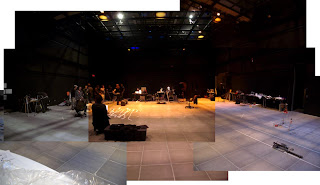
A shot of flying into Montreal.

This is a photograph of the Black Box at Concordia. It is part of Hexagram - an institute for research/creation in media arts and technologies. This was our workspace for the week in which we basically spent all day/night in. It was an amazing space. I'd also like to thank all the people at Hexagram for all of their hard work and help throughout the week. All of your expertise, and your willingness to share it, was amazing.
The Black Box was our blank canvas. We had no idea what to totally expect getting there. It really was a process of collaborating and making... a great experience.


AMANEUNSIS - Process: Pincer Prototype B & Clip
Pincer prototype A was far too rigid and bulky. It portrayed the correct idea of the function in which the device is supposed to perform, however it satisfied neither total functional needs nor aesthetic. Prototype A was derived with the thought that a separate pincer would be built for each of the different elevations of keys that needed to be contacted on the keyboard circuit. It was fixed upon the frame. This would have meant 4 different iterations of the pincer when only one would be necessary if made adjustable. Prototype B was an attempt at satisfying both of the previous shortcomings.
Before: Prototype A
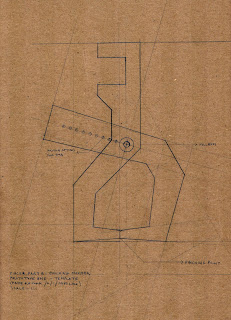
After: Prototype B - Drawn with adjustable clip attached to frame.
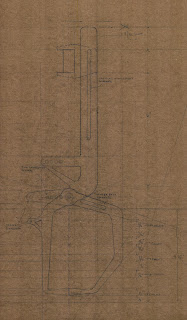
The clip, which would allow for the pincer to be height adjustable and reach any row of keys on the keyboard circuit. The Pincer would be secured in place by means of a bolt and wingnut for ease of adjustment.
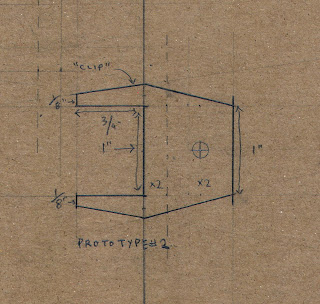
The vector / Adobe Illustrator files used for laser cutting the pincer pieces, clips, as well as a platform or rack to support the typewriter's (not the keyboard's) circuit board.
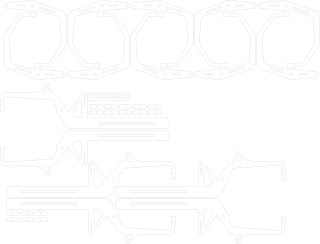
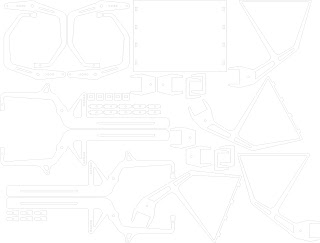
Before: Prototype A

After: Prototype B - Drawn with adjustable clip attached to frame.

The clip, which would allow for the pincer to be height adjustable and reach any row of keys on the keyboard circuit. The Pincer would be secured in place by means of a bolt and wingnut for ease of adjustment.

The vector / Adobe Illustrator files used for laser cutting the pincer pieces, clips, as well as a platform or rack to support the typewriter's (not the keyboard's) circuit board.


Friday, November 16, 2007
AMANEUNSIS - Process: Pincer Prototype A & Keyboard Framing
Subscribe to:
Posts (Atom)

